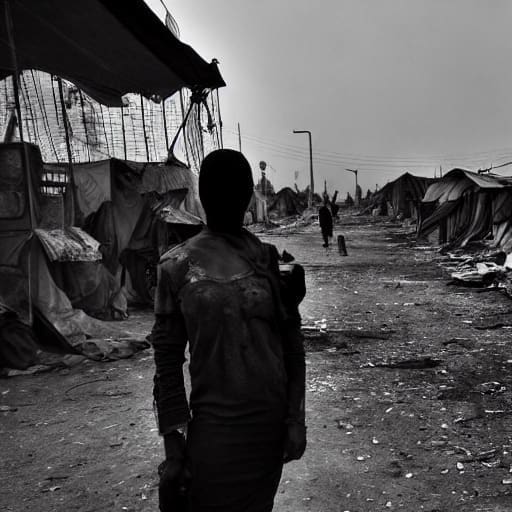NGOs, Charities and Their Global Impact
The concept of giving is deeply embedded in human nature, a practice that transcends cultural, religious, and geographic boundaries. Giving, in various forms, shapes the fabric of societies and builds bridges of hope and compassion. At the heart of this phenomenon are non-governmental organizations (NGOs) and charities, institutions that embody the spirit of altruism. Their efforts have created ripples of change globally, turning small acts of generosity into powerful movements that address some of the world’s most pressing issues.

All of our content is free to access. An independent magazine nonetheless requires investment, so if you take value from this article or any others, please consider sharing, subscribing to our mailing list or donating if you can. Your support is always gratefully received and will never be forgotten. To buy us a metaphorical coffee or two, please click this link.
Table of Contents
*Youtube Video Taken From the Promises Project Film ‘Loved by Ghosts‘
The Role of NGOs and Charities
NGOs and charities have long been the frontline warriors in the battle against poverty, disease, and social injustice. These organizations function independently of government control, allowing them to address issues that may be overlooked or inadequately managed by official entities. Their power lies in their ability to mobilize resources, both human and financial, to address specific needs in communities around the world.
One of the most prominent examples is the Bill and Melinda Gates Foundation. With its vast resources, the foundation has been pivotal in combating diseases such as malaria, polio, and HIV/AIDS. By funding research, vaccination programs, and healthcare infrastructure in developing countries, the foundation has saved millions of lives and improved the quality of life for countless individuals.

Tangible Results of Charitable Actions
The tangible results of giving are evident in the lives transformed by charitable actions. Take the case of Malala Yousafzai, a Pakistani girl who survived an assassination attempt by the Taliban due to her advocacy for girls’ education. Following her recovery, Malala, with the support of numerous NGOs and charitable contributions, founded the Malala Fund. This organization works to ensure that girls around the world have access to 12 years of free, safe, and quality education. The impact of this initiative is profound, as educating girls is linked to numerous positive outcomes, including reduced child mortality rates, improved economic prospects, and stronger communities.
Health and Sanitation
In Africa, the charity organization WaterAid has made significant strides in providing access to clean water and sanitation. In regions where water scarcity and poor sanitation are critical issues, WaterAid’s efforts have led to the construction of wells, boreholes, and sanitation facilities. This has not only reduced the prevalence of waterborne diseases but also freed up time for women and children who previously had to walk long distances to fetch water. The ripple effects of these interventions include better health, improved school attendance, and enhanced economic opportunities for entire communities.

Environmental Conservation
The global impact of charity extends beyond health and education. Environmental conservation is another area where NGOs and charities have made substantial contributions. The World Wildlife Fund (WWF), for instance, works tirelessly to protect endangered species and their habitats. Through initiatives such as anti-poaching patrols, habitat restoration projects, and community engagement programs, the WWF has helped preserve biodiversity in some of the world’s most vulnerable ecosystems. The success stories of species brought back from the brink of extinction, such as the giant panda and the black rhino, underscore the power of collective action in addressing environmental challenges.
Economic Implications of Charitable Giving
The economic implications of charitable giving are also noteworthy. Microfinance institutions like Grameen Bank, founded by Nobel Laureate Muhammad Yunus, provide small loans to impoverished individuals, primarily women, to start their businesses. These microloans, often less than $100, have empowered millions to lift themselves out of poverty. The stories of women who have transformed their lives through these loans, creating sustainable businesses and improving their families’ living standards, highlight the transformative power of financial inclusion. The success of Grameen Bank has inspired similar initiatives worldwide, demonstrating that targeted financial assistance can be a catalyst for economic development.

Humanitarian Aid and Crisis Response
Charitable organizations also play a critical role in humanitarian crises. The International Red Cross and Red Crescent Movement is a prime example. This global network provides emergency assistance, disaster relief, and education in communities affected by conflict, natural disasters, and other emergencies. Their work in war-torn regions like Syria and Yemen, as well as in the aftermath of natural disasters such as the 2010 Haiti earthquake, showcases their ability to mobilize resources rapidly and effectively. The stories of lives saved, families reunited, and communities rebuilt in the wake of such crises are testaments to the indispensable role of humanitarian aid.

Global Solidarity and Collaborative Efforts
One of the most compelling aspects of charitable giving is its ability to create a sense of global solidarity. In times of crisis, individuals and organizations from diverse backgrounds come together to offer support. The COVID-19 pandemic is a recent example of this phenomenon. NGOs, charities, and private donors played a crucial role in supporting healthcare systems, providing personal protective equipment, and funding vaccine distribution in low-income countries.
Initiatives like the COVID-19 Solidarity Response Fund, established by the World Health Organization (WHO), the United Nations Foundation, and the Swiss Philanthropy Foundation, mobilized resources from around the world to support countries in their fight against the virus. The collaborative efforts of governments, NGOs, and the private sector have highlighted the power of unity in addressing global challenges.
Promoting Empathy and Responsibility
The impact of charitable giving is not only measured in lives saved and communities uplifted but also in the fostering of a culture of empathy and responsibility. Philanthropy encourages individuals to look beyond their immediate surroundings and consider the well-being of others. Educational programs, such as those run by Teach For All, inspire young people to take up the mantle of social responsibility. Teach For All, an international network of organizations, recruits and trains individuals to teach in under-resourced schools worldwide. The stories of passionate educators transforming classrooms and communities underscore the importance of investing in human capital for sustainable development.

Corporate Social Responsibility
The power of giving also extends to the corporate world. Corporate social responsibility (CSR) initiatives have become integral to business strategies, with companies recognizing the value of contributing to societal well-being. TOMS Shoes, for example, operates on a one-for-one model, donating a pair of shoes to a child in need for every pair sold. This initiative has provided millions of children with shoes, improving their health and access to education. Similarly, companies like Patagonia have committed significant resources to environmental conservation, demonstrating that businesses can be powerful agents of positive change.
Challenges and Future Directions
Despite the remarkable achievements of NGOs and charities, challenges remain. The sustainability of charitable efforts is often contingent on continued funding and support. In some cases, dependency on external aid can hinder the development of local capacities and self-sufficiency. Therefore, it is crucial for charitable organizations to adopt strategies that promote long-term resilience and empowerment of communities. This involves investing in capacity-building, fostering local leadership, and ensuring that interventions are culturally appropriate and community-driven.

The Effectiveness of Charitable Interventions
Moreover, the effectiveness of charitable interventions can be enhanced through greater collaboration and coordination among stakeholders. Partnerships between NGOs, governments, and the private sector can leverage the strengths of each entity, ensuring a more comprehensive and sustainable approach to addressing global challenges. For instance, public-private partnerships in healthcare have led to significant advancements in combating diseases like malaria and tuberculosis, combining the resources and expertise of various actors to achieve common goals.
Transparency and accountability
Transparency and accountability are also critical for maintaining public trust and ensuring the efficacy of charitable efforts. Donors, whether individuals or institutions, need to be confident that their contributions are being used effectively and ethically. Organizations like Charity Navigator and GuideStar provide valuable information on the financial health, accountability, and transparency of charities, helping donors make informed decisions. By adhering to high standards of governance and reporting, NGOs and charities can build credibility and attract sustained support.

The Power of Giving is a Profound Force for Good
the power of giving is a profound force for good in the world, manifesting through the tireless efforts of NGOs, charities, and compassionate individuals. The tangible results of these efforts, seen in lives saved, communities uplifted, and ecosystems preserved, underscore the transformative potential of altruism. While challenges persist, the collective commitment to philanthropy continues to inspire hope and drive progress.
By fostering a culture of giving, promoting collaboration, and ensuring transparency, we can amplify the impact of charitable actions and build a more just, equitable, and compassionate world. The stories of change catalysed by giving remind us that, despite the enormity of global challenges, each act of kindness and generosity contributes to a brighter future for all.









































What do you think?